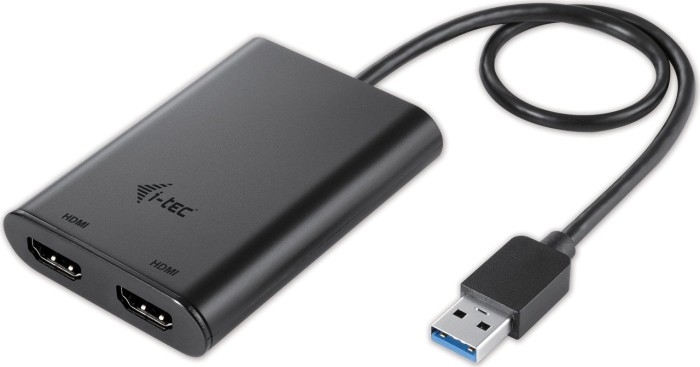Sowas von falsch und du hast keinen blassen Schimmer von dem was da passiert!

en.wikipedia.org
Wenn ist da der DisplayLink Treiber absolut allein die immer virtuelle GPU!
Den großen Unterschied zwischen virtuell und real kaue Ich dir definitiv nicht vor.
"bleibt eine vollwertige Grafikkarte und würde auch ganz ohne Onboard Grafik funktionieren"
Ist sowas von falsch und definitiv auf AfD oder Trump Niveau...
Da wird absolut immer ne GPU emuliert und auf der englischen WiKi Seite ist das genau erklärt!
Ohne die onboard Grafik läuft da absolut nix und das ist so sicher wie das Amen in der Kirche!
Und wem man noch sagen muß das dazu immer ne reale GPU vorhanden sein muß...
Und "dein" Schrottbay Adapter aus China dürfte bei dem Preis never ever nen DisplayLink Chip besitzen!!!
Es gibt oder gab 1-2 Konkurrenten von DisplayLink in China mit absolut grottenschlechten Treibern und Chips!
Mindestens die Gefahr sich da absoluten Müll einzukaufen ist absolut immer hoch und bei den Billigteilen geben die Chinesen niemals an welcher Chip sich da drin verbirgt.
"But no matter which device you're using, the underlying process is the same:
- Encoding video on the host system
- Sending data
- Decoding data on the USB device"
"The first step of the process, encoding, happens in two stages. First, static video information is stripped from the signal. The idea there is to reduce the amount of data the system sends because transmitting more information costs energy, processing overhead, and precious bandwidth. Then, the video is actually encoded. In practice, DisplayLink divides the screen into sections and only encodes the video data for the sections that change. As a result, moving your mouse across the screen requires far less processing than watching full-screen video.
All of the encoding is done on the host (it's not offloaded to DisplayLink's logic). So, the workload is always the same on every DisplayLink-based device. The only factors that affect the processor workload are resolution and the on-screen activity.
Once the video data is stripped and encoded, it’s sent over USB to the DisplayLink device. This is where the company's hardware decompresses the stream and outputs a standard VGA/DVI signal. According to DisplayLink, all of the technology on the decode side is homegrown, which is another component of the secret sauce the company won't discuss any further."
Would you like to add another monitor, but find yourself out of display outputs? DisplayLink's technology employs the USB bus to extend your screen. The current implementation isn't perfect; we're more excited about the USB 3.0 hardware it has planned.

www.tomshardware.com
Das sollte eigentlich jeder kapieren und ist da immer so...
P.S.
Would you like to add another monitor, but find yourself out of display outputs? DisplayLink's technology employs the USB bus to extend your screen. The current implementation isn't perfect; we're more excited about the USB 3.0 hardware it has planned.

www.tomshardware.com
Außerdem wird da die CPU beim "Encoding video on the host system" natürlich immer sehr stark belastet (wenn ne lahme iGPU am Werk ist) und seine CPUs sind sehr lahm und alt und zwar bei der CPU und der iGPU!
Wobei der E3-1220L v2 natürlich keine iGPU hat.
=> das ist allgemein da ne Schnappsidee bei CPUs, die Ich aus guten Gründen schon vor langem der Tonne übergeben hätte.





